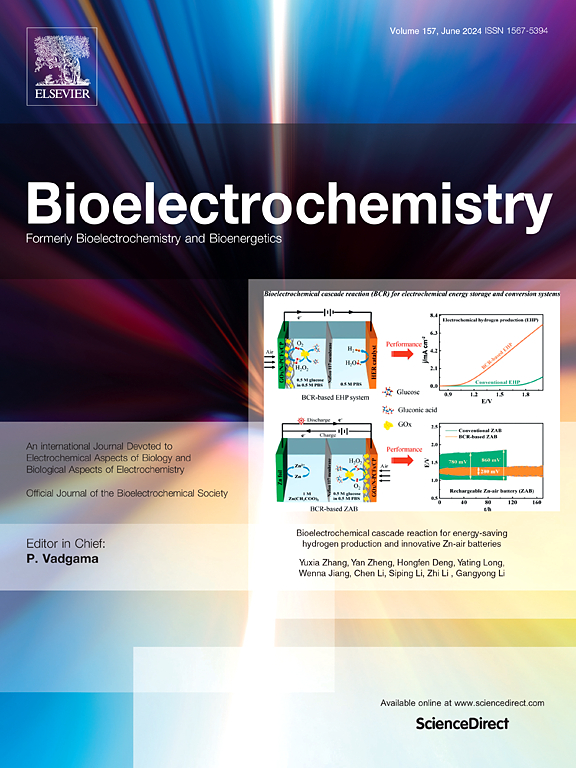攻击性是导致社会失败和压力脆弱性的一个因素
IF 3.6
2区 医学
Q1 NEUROSCIENCES
引用次数: 0
摘要
压力替代模型(SAM)是我们实验室开发的一种社会失败/回避范式,揭示了鱼、仓鼠、大鼠和小鼠在进化上保守的逃避反应。在中性竞技场的社会互动中,小型实验动物专用的逃生路线可以避免社会攻击者。这项为期4天的社会互动方案每天将C57BL/6N测试小鼠和一只更大的、新颖的、具有攻击性的CD1小鼠配对。虽然逃逸通道是可用的,并且CD1侵略者是持续拮抗的,但只有一半的小鼠利用了逃逸通道,而逃逸的小鼠的逃逸潜伏期随着时间的推移显着减少。我们试图确定攻击性是否触发了由SAM产生的两种与压力相关的表型。结果表明,由第一次攻击决定的攻击威胁对于表型的发展是必要的,但随着时间的推移,攻击的强度并不能决定选择哪种表型。表型是由反应性和促进应激恢复或脆弱性的平衡神经回路决定的。这些应激神经回路由食欲素调节,通过食欲素1和2受体(Orx1, Orx2),促进促应激行为。在aBLA的主要前应激神经回路中,我们检测了应激复原(Escape)和应激脆弱(Stay)小鼠中Akt和mToR基因的表达。Stay小鼠的Hcrtr1 mRNA/细胞数量升高,Mtor的mRNA/细胞数量也升高。然而,在表达Hcrtr1的细胞中,Akt2和Mtor mRNA/cell的增加并不明显,这表明这些神经可塑性的分子标记并未被Orx1受体激活。本文章由计算机程序翻译,如有差异,请以英文原文为准。
Aggression as a contributing factor to social defeat and stress vulnerability
The Stress Alternatives Model (SAM) is a social defeat/avoidance paradigm developed in our lab that reveals evolutionarily conserved escape responses in fish, hamsters, rats, and mice. During social interactions in a neutral arena, available escape routes sized exclusively for smaller test animals allow for avoidance of a social aggressor. This 4-day social interaction protocol pairs C57BL/6N test mice and a larger, novel, aggressive CD1 mouse each day. Although escape portals are available, and the CD1 aggressor is unremittingly antagonistic, only half of the mice tested utilize the escape tunnels, while escape latency dramatically decreases over time in mice that escape. We sought to determine whether aggression provided the trigger of two stress-related phenotypes that are produced by the SAM. The results suggest threat of aggression, determined by the first attack, is necessary for phenotype development, but the intensity of aggression over time does not determine which phenotype is chosen. Phenotypes are determined by responsiveness and counterbalanced neurocircuits that promote stress-resilience or vulnerability. These stress neurocircuits are modulated by orexins, through orexin 1 and 2 receptors (Orx1, Orx2), which promote pro-stress behaviors. In the primary pro-stress neurocircuitry of the aBLA, we examined Akt and mToR gene expression in stress-resilient (Escape) and -vulnerable (Stay) mice. The quantity of Hcrtr1 mRNA/cell was elevated in Stay mice, as were the mRNA/cell numbers for Mtor. However, the increase of Akt2 and Mtor mRNA/cell was not evident specifically in Hcrtr1 expressing cells, suggesting these molecular markers of neuroplasticity are not being activated by Orx1 receptors.
求助全文
通过发布文献求助,成功后即可免费获取论文全文。
去求助
来源期刊

Neurobiology of Stress
Biochemistry, Genetics and Molecular Biology-Biochemistry
CiteScore
9.40
自引率
4.00%
发文量
74
审稿时长
48 days
期刊介绍:
Neurobiology of Stress is a multidisciplinary journal for the publication of original research and review articles on basic, translational and clinical research into stress and related disorders. It will focus on the impact of stress on the brain from cellular to behavioral functions and stress-related neuropsychiatric disorders (such as depression, trauma and anxiety). The translation of basic research findings into real-world applications will be a key aim of the journal.
Basic, translational and clinical research on the following topics as they relate to stress will be covered:
Molecular substrates and cell signaling,
Genetics and epigenetics,
Stress circuitry,
Structural and physiological plasticity,
Developmental Aspects,
Laboratory models of stress,
Neuroinflammation and pathology,
Memory and Cognition,
Motivational Processes,
Fear and Anxiety,
Stress-related neuropsychiatric disorders (including depression, PTSD, substance abuse),
Neuropsychopharmacology.
 求助内容:
求助内容: 应助结果提醒方式:
应助结果提醒方式:


